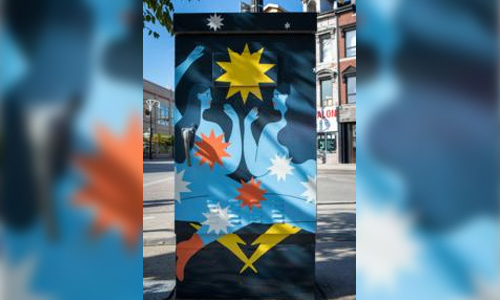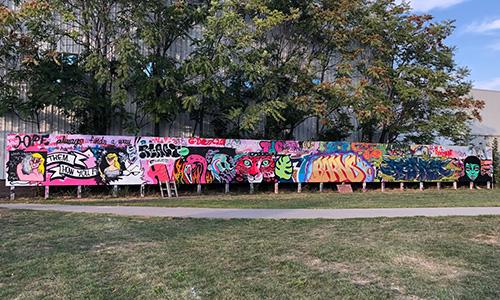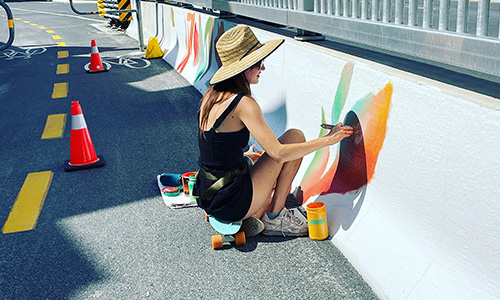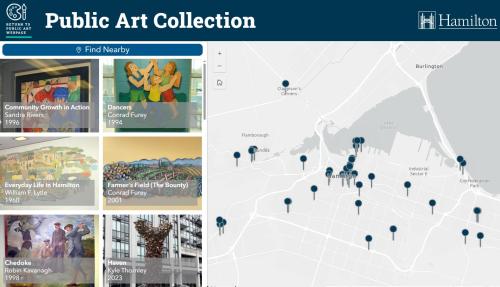Public Art
Sign up for the Hamilton Public Art Connection email
Stay up to date about:
- Public Art Call for Artists
- Public Art consultation events
- Winning artists
- Public Art celebrations of new installations and other related events

For additional information

Help us put the Public in Public Art
The Public Art Master Plan (PAMP) serves as our roadmap for shaping Hamilton's unique character and transforming its public spaces through art. Join the conversation to shape future directions for public art across our city. Engagement Deadline Extended to March 28.
Art in public places enriches the quality of life of citizens by adding cultural, social and economic value to our shared public places. It encourages a sense of belonging, social cohesion, cultural understanding and allows for the expression of our evolving collective history, values and culture.
The City of Hamilton is committed to working with artists, businesses, and citizens in the ongoing development and implementation of art in public places projects to enhance our sense of community and public places across the City.
Calls for Artists & Public Consultation
Calls for Artists to create publicly commissioned art are issued throughout the year, and citizens are invited to contribute through public consultation. Review the Art in Public Places Policy for an outline of these processes as well as key priorities and guiding principles for art in public places for the City of Hamilton.
Works in progress
The City of Hamilton is continually working with artists and community to create more art in public places. Calls for Artists to create publicly commissioned art are issued throughout the year, and citizens are invited to contribute through public consultation. Adjudication by a volunteer citizen jury is the final step in the selection of the winning proposal.
Review the Art in Public Places Policy and Public Art Master Plan for an outline of these processes as well as key priorities and guiding principles for art in public places for the City of Hamilton.
Sign up for the Hamilton Public Art Connection mailing list to stay up to date about calls for artists, public consultation events, celebrations of new installations and other related news.
Recently Installed Works
Guiding Policies & Arts Advisory Commission
The City of Hamilton is committed to working with artists, businesses and citizens in the ongoing development and implementation of public art projects to enhance our sense of community and public places across the City. Public Art staff support processes of commissioning or acquiring art for installation in public places in adherence with the following guiding policy documents.
Hamilton’s Public Art program is supported by the Hamilton Arts Advisory Commission (AAC), a volunteer committee of Hamilton City Council. The AAC also delivers special projects to advance the interests of the local arts community.
Special Projects & Temporary Art
Traffic Signal Cabinet Wraps
The City of Hamilton is beautifying the urban landscape by wrapping traffic cabinet and utility boxes with artwork by local artists. Designs are vibrant, positive works focused on celebrating the stories and features of the city of Hamilton. Artwork is considered temporary with a maximum lifespan of 10 years.

Legal Street Art Walls
The City of Hamilton has installed spaces where street artists are free to create sanctioned art. Legal street art walls are located at:

Keddy Access Trail
A series of mural projects for barrier walls along the Keddy Access Trail and the Jolley Cut Underpass.









